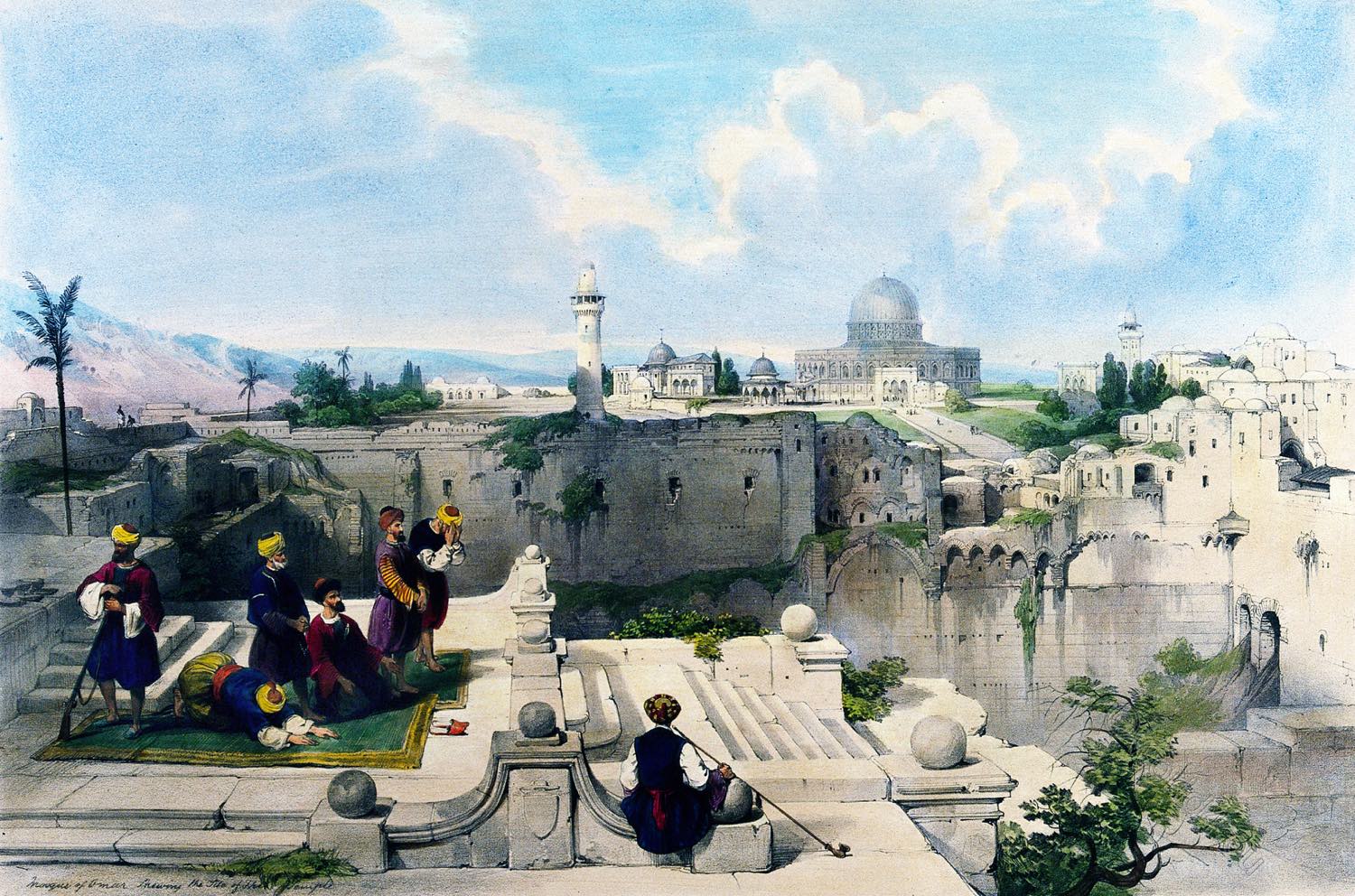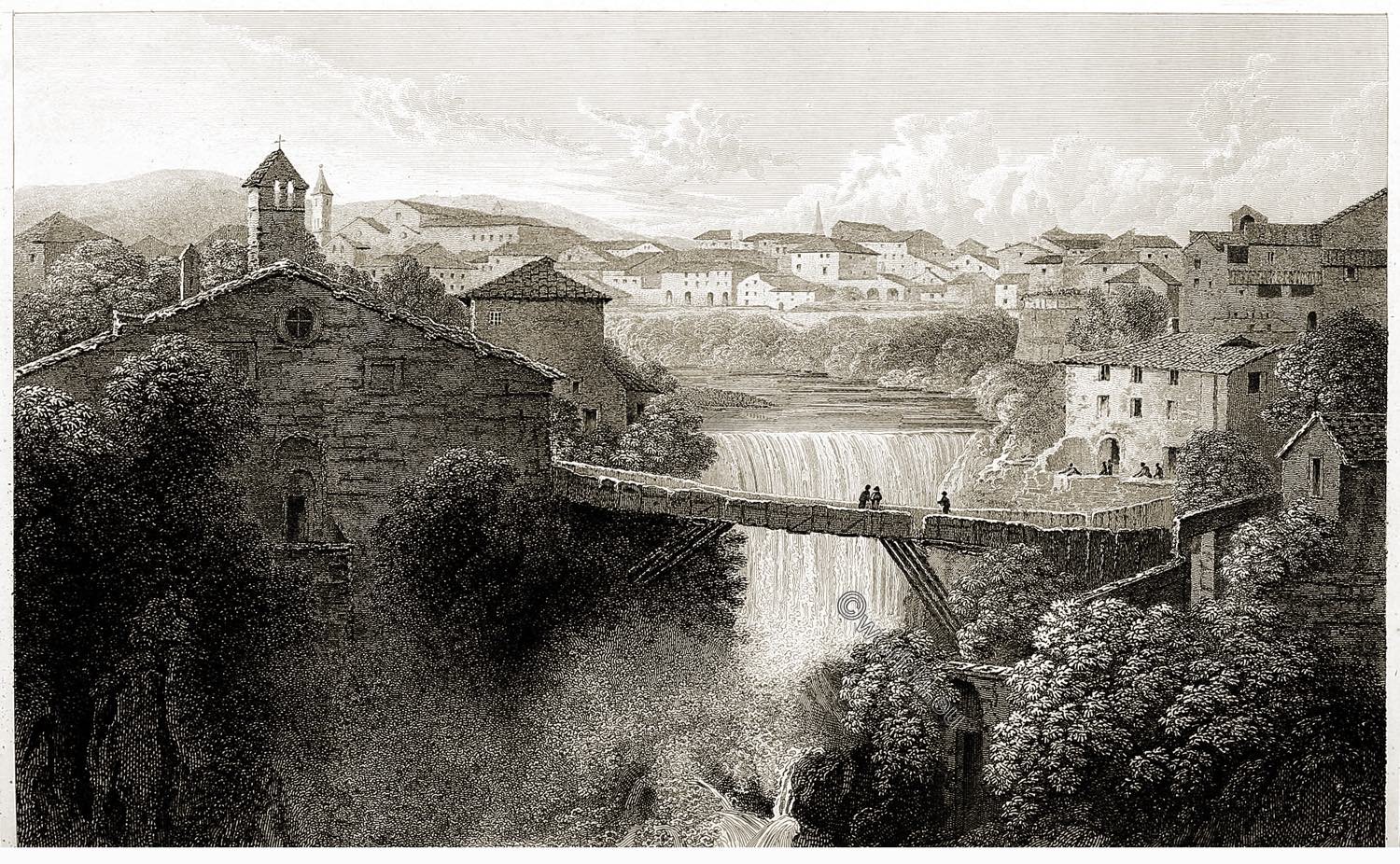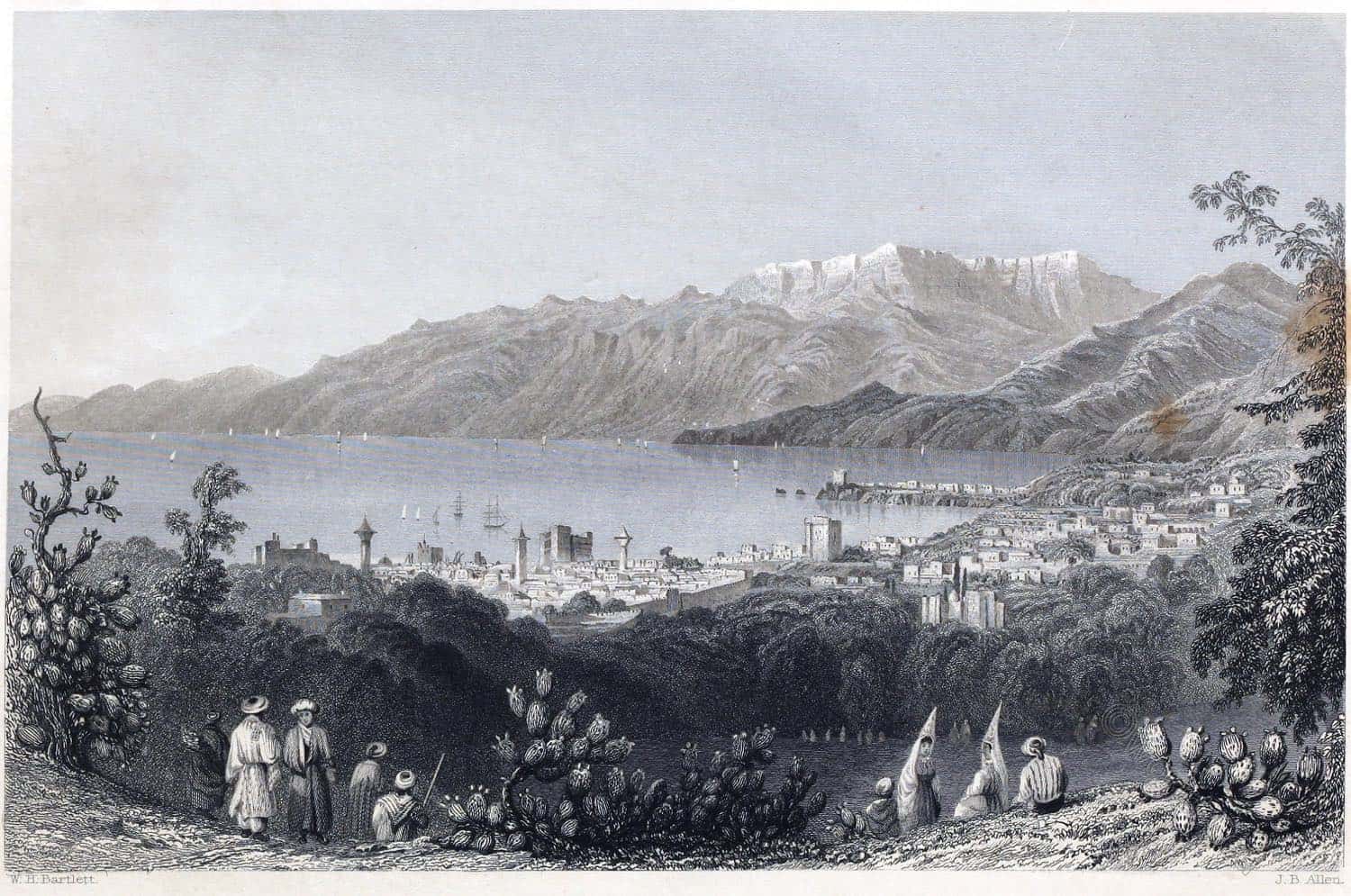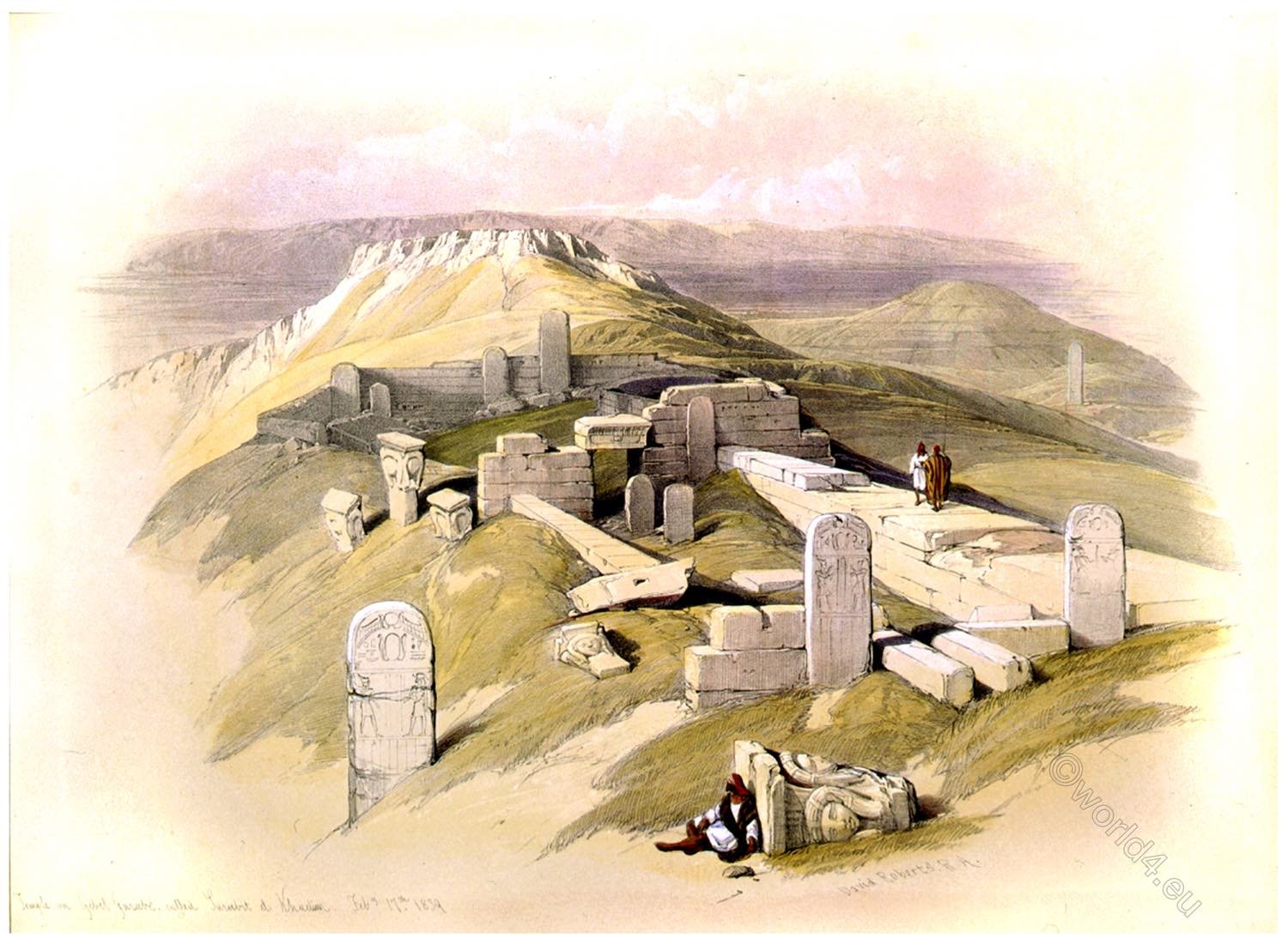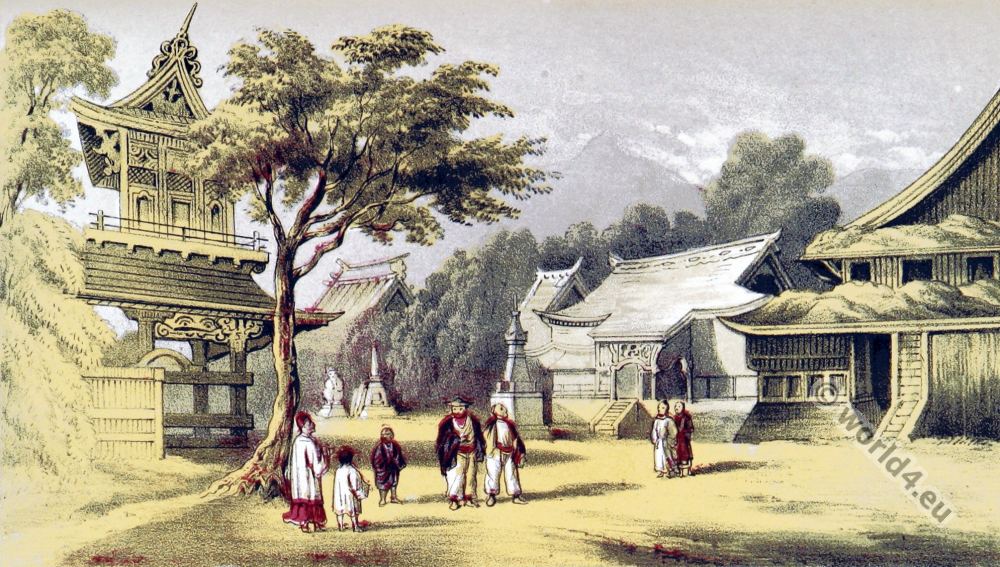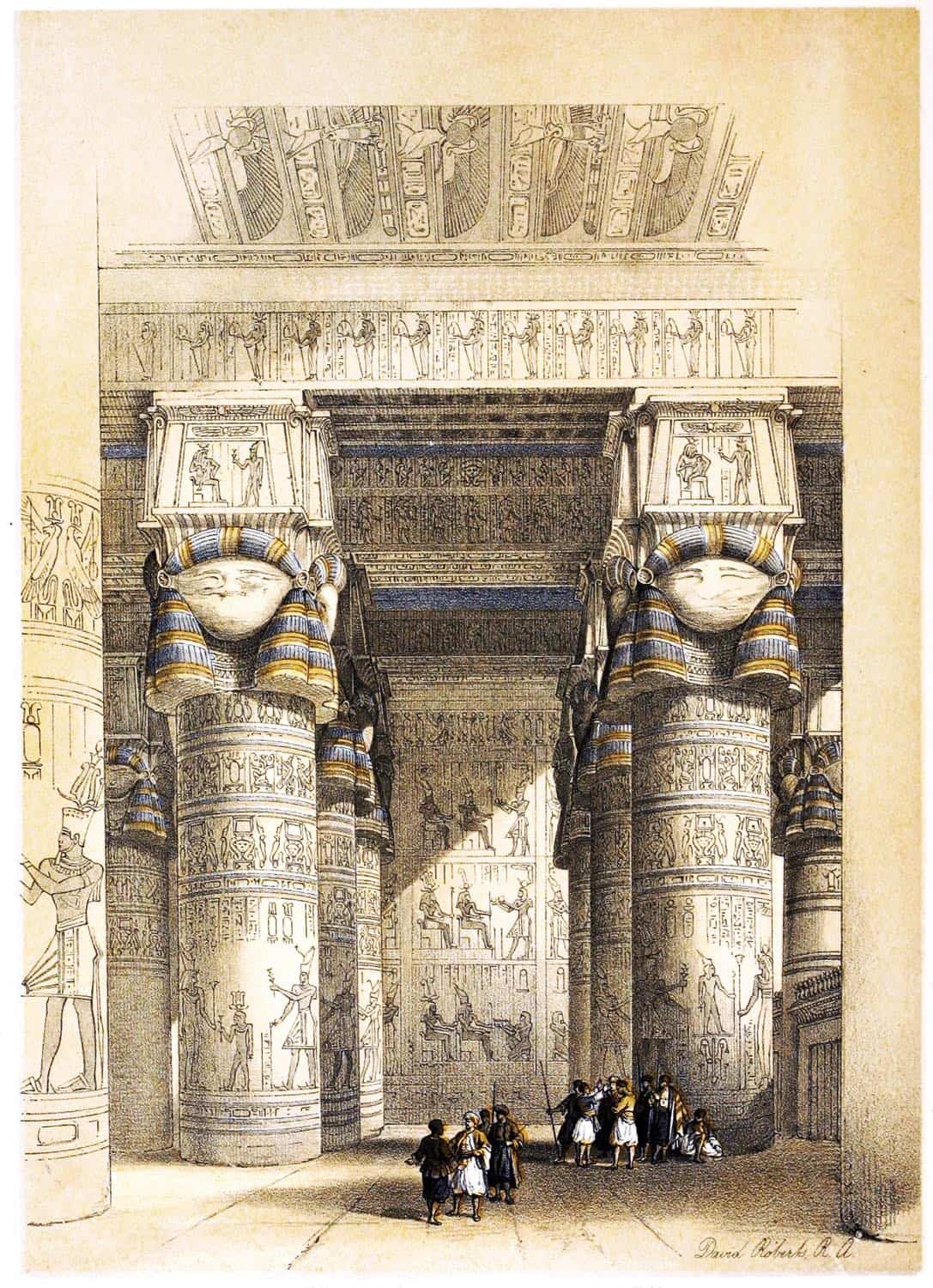
View from under the Portico of the Temple of Dendera. June 1st, 1848.
The Temple of Dendera is an ancient Egyptian temple complex in Dendera, 55 km north of Luxor in Upper Egypt. It is one of the most important temple sites in Egypt and was dedicated to the goddess Hathor.
The complex is located in the district of the ancient provincial capital of Tentyris, which was an important religious centre during several periods of Egyptian history. The present temple complex is one of the best preserved Egyptian temples of this period.
VIEW FROM UNDER THE PORTICO OP THE GREAT TEMPLE OF DENDERA.
It is from beneath and within this magnificent portico of twenty-four columns that the grandeur of magnitude and the beauty of decoration produce their greatest effect upon the traveller who visits this beautiful Temple. It is a work of the Roman period, but because it is less severe than the older Egyptian structures it is decried by the cant of connoisseurship, and “learned pundits” direct the traveller to look upon it as low in art.
It is certainly less visited and observed than it deserves to be; for the traveller who makes the voyage up the Nile too generally, in his haste against time and season to reach the Cataracts, leaves the examination of Dendera till his return, when, with his mind filled, if not wearied, with excess of impressions received from his visits to other temples, he neglects or slurs over Dendera, or allows the ignorance of others to weaken the impression which he must otherwise receive from this magnificent Temple.
Mr. Roberts says, that “whilst those who assume to be learned in Egyptian antiquities sneer at the Temple of Dendera, because of its comparatively modern date, they must be blind to the principles of structure which have raised and placed single stones thirty-five feet long, and of proportionate breadth and thickness, such as those which formed the roof; and the sharpness and finish of the sculptured decorations and beautiful colours which everywhere enrich it. I beheld Dendera,” he says, “after having minutely examined the Temples of Upper Egypt and Nubia, and it did not suffer in beauty by the comparison, though it is less sublime than the Temples of Thebes; yet one of the elements of this emotion—magnitude, is only surpassed in the City of a Hundred Gates. The portico, the last portion of this Temple that was built by Tiberius, is one hundred and thirty-six feet six inches wide, seventy-eight feet deep, and sixty feet high: massive, simple, and grand.”
A richly-sculptured screen or wall of intercolumniation, closes the access in front, except through the central column of the facade; within, and viewed as the drawing here represents, across the portico, it scarcely yields to any other temple in the impression it gives. Every spot is covered with the remains of the most finished and elaborate sculpture. Columns, screens, walls, soffits, ceiling—all were thus decorated and painted, and are still vivid with the colours of their first enrichment; and where the sculpture has not been injured by the early Christians in their horror of image-worship, it is as sharp and as perfect as when left by the sculptor’s chisel.
Wathen, whose opinion agrees with that of Mr. Roberts upon this Temple, says: “The portico, formed of four ranks of massive columns, six in a row, covered with painted sculptures, whether viewed from without as a facade, or standing within its colonnades, is rich, imposing, sublime; it delights the eye and fills the imagination.
Entirely inclosed on three sides, and partly on the fourth, by the intercolumnar screens, it has all that solemn gloom—that religious twilight—so characteristic of the Egyptian interior, and so strikingly contrasted to the intense brilliancy of an Egyptian day. The walls are encrusted with relieves, and the ceiling with astronomic and enigmatic emblems; among these is the zodiac which has caused so much speculation. The portico leads to a pillared hall or vestibule; beyond are seen a suite of three or four chambers, in deeper and deeper shadow; and far within is seen the small dark sanctuary.”
The roof of the Temple, which still remains entire, is covered with Arab huts; the portico is only partially cleared of the sand, which externally rises in many places to the roof; chambers evidently exist, which on this account are inaccessible, but which we may yet hope to see removed.
Roberts’s Journal. Wathen’s Arts and Antiquities of Egypt.
Source: The Holy Land, Syria, Idumea, Arabia, Egypt, & Nubia, by David Roberts, George Croly, William Brockedon. London: Lithographed, printed and published by Day & Son, lithographers to the Queen. Cate Street, Lincoln’s Inn Fields, 1855.
Discover more from World4 Costume Culture History
Subscribe to get the latest posts sent to your email.

